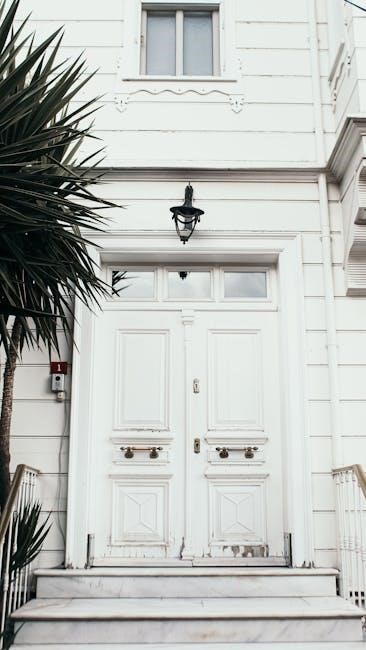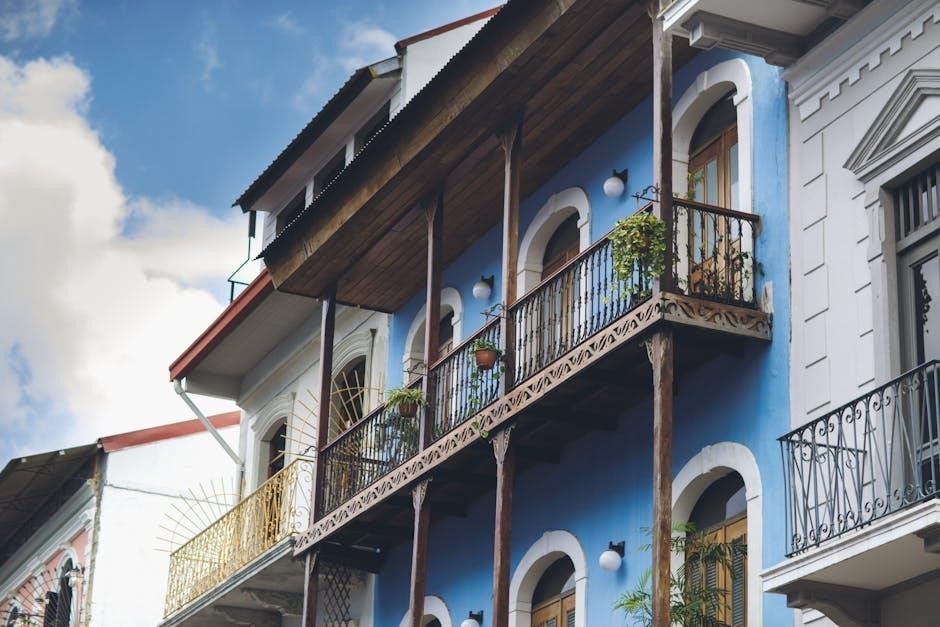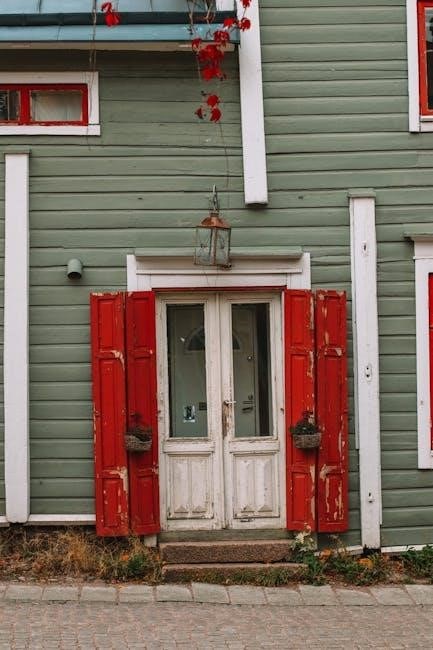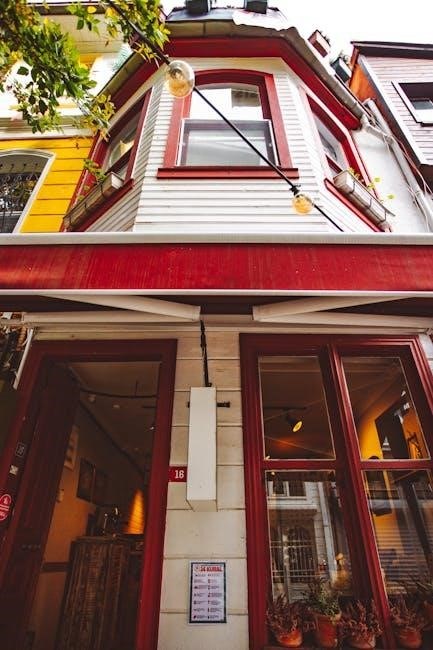Published in 1962, The White House: An Historic Guide is the official tour guide, offering a detailed exploration of the Executive Mansion’s history, architecture, and significance, with rare photographs and insights.
The Publication History of The White House: An Historic Guide
First published in 1962 by the White House Historical Association, the guide has undergone numerous updates, with new editions adding comprehensive details and visual enhancements over the years.
First Edition in 1962 and Its Significance

The first edition of The White House: An Historic Guide was published in 1962 under the auspices of the White House Historical Association. This inaugural edition marked a significant milestone in preserving and sharing the history of the Executive Mansion with the public. Conceived during Jacqueline Kennedy’s tenure as First Lady, the guidebook was part of her broader initiative to restore and promote the White House’s historical legacy. The 1962 edition featured detailed descriptions of the building’s architecture, its evolution, and the stories behind its iconic rooms. It also included photographs that captured the elegance and grandeur of the White House, making it an invaluable resource for historians and the general public alike. This first edition set the standard for all future updates, ensuring that the guide remained a comprehensive and authoritative source on the White House’s rich history.
Subsequent Editions and Updates
Following the success of the 1962 edition, The White House: An Historic Guide has undergone numerous updates to reflect changes in the Executive Mansion’s interiors and historical narratives. Each new edition has incorporated fresh insights, updated photography, and expanded content to provide a more comprehensive view of the White House. For instance, later editions introduced fold-out pages and wide-angle photographs, enhancing the reader’s visual experience. The guide has also evolved to include contributions from historians and experts, ensuring that its content remains accurate and engaging. These updates have not only kept the guide relevant but also made it a cherished collectible among enthusiasts. By continuously refining its content, the guidebook remains an essential resource for understanding the White House’s enduring significance and its role as a symbol of American history and democracy.

Jacqueline Kennedy’s Role in Creating the Guidebook
First Lady Jacqueline Kennedy initiated the creation of The White House: An Historic Guide in 1962, overseeing its publication to preserve the White House’s historical legacy for the public.
Her Vision for Preserving White House History
Jacqueline Kennedy envisioned The White House: An Historic Guide as a tool to educate the public about the mansion’s rich history and cultural significance. She believed in preserving its historical integrity, ensuring future generations could appreciate the home of American presidents. Her dedication led to the book’s detailed room-by-room descriptions and rare photographs, capturing the White House’s essence. Kennedy’s efforts not only highlighted its architectural beauty but also its role as a symbol of American democracy. Her vision transformed the guidebook into a cherished resource, blending history with accessibility, and cementing her legacy in White House preservation.
A Detailed Room-by-Room Tour of the White House
The White House: An Historic Guide offers an intimate room-by-room exploration, featuring photographs and detailed descriptions that bring the mansion’s history, design, and significance to life for readers.
Ground Floor: History and Significance
The Ground Floor of the White House holds profound historical significance, serving as the foundation of the Executive Mansion. Originally designed by architect James Hoban, this level has undergone transformations over the years, reflecting the evolving needs of presidential families and staff. The Ground Floor houses essential functional spaces, including the Diplomatic Reception Room, which has hosted countless international dignitaries. It also features the Library, a cozy space filled with literary treasures, and the Vermeil Room, showcasing an impressive collection of American silver. These rooms not only highlight the architectural ingenuity of the White House but also offer glimpses into the daily operations and cultural legacy of the presidential residence. The Ground Floor’s enduring presence underscores its importance as a cornerstone of the White House’s storied past and its continued role in modern presidential life.
State Floor: Iconic Rooms and Their Stories
The State Floor is the ceremonial heart of the White House, showcasing iconic rooms that have witnessed historic events and presidential traditions. The East Room, the largest and most formal space, has hosted countless receptions, ceremonies, and even presidential inaugural luncheons. Adorned with crystal chandeliers and tall windows, it exudes grandeur and elegance. The Green Room, known for its vibrant green walls and neoclassical decor, serves as a relaxing space for guests and a showcase for American art. The Blue Room, with its distinctive oval shape and French Empire-style furnishings, is a favorite for holiday celebrations. The Red Room, bold and warm, has been a space for informal gatherings and women’s events. Each room on the State Floor carries stories of presidents, first ladies, and global leaders, offering a glimpse into the nation’s rich history through its architecture and decor.
Private Quarters: A Glimpse into Presidential Living
The private quarters of the White House, located on the second and third floors, provide a rare glimpse into the personal lives of U.S. presidents and their families. These areas are designed to offer comfort and privacy, blending traditional decor with modern amenities. The family dining room, for instance, is a cozy space where the First Family enjoys meals together. The residence also includes a sitting room, a library, and a balcony overlooking the South Lawn, offering stunning views of the White House grounds; Over the years, First Ladies like Jacqueline Kennedy have played a significant role in preserving the historic character of these rooms while incorporating personal touches. The private quarters reflect the unique tastes and traditions of each administration, creating a home that balances history with the needs of modern living.

The Historical Context of the White House
The White House, built in 1800, stands as a symbol of American democracy and history. Its architecture reflects Neoclassical design, blending tradition with timeless elegance, representing the nation’s enduring legacy.
Architectural Evolution and Key Features
The White House, designed by Irish-born architect James Hoban, embodies Neoclassical architecture, reflecting early American ideals. Its iconic facade features a central dome and balanced proportions, symbolizing harmony and stability. Over the years, the building has undergone expansions, such as the addition of the West Wing in 1902 and the East Wing in 1942, while maintaining its original aesthetic integrity. The interior boasts intricate moldings, marble floors, and grand staircases, blending functional spaces with historic preservation. The White House’s architectural evolution mirrors the nation’s growth, incorporating modern necessities while honoring its founding design. This balance of tradition and innovation ensures the White House remains both a functional residence and a revered symbol of American history and democracy.
The Role of First Ladies in Shaping the White House
First Ladies have played a pivotal role in shaping the White House’s cultural and historical identity. Jacqueline Kennedy, for instance, was instrumental in preserving its historic integrity, while others like Dolley Madison ensured the safety of its artifacts during crises. Each First Lady has brought unique contributions, from interior design to public engagement, reflecting their individual styles and priorities. Their efforts have not only enhanced the White House’s aesthetic but also elevated its status as a national symbol. Through their dedication, they have left lasting legacies that continue to inspire admiration and respect for the Executive Mansion.

Evolution of the Guidebook Over the Years

The White House: An Historic Guide has evolved significantly since its 1962 debut, with updated editions featuring new content, fold-out pages, and wide-angle photos to enhance reader experience and historical depth.

New Features and Expanded Content in Recent Editions
Recent editions of The White House: An Historic Guide have introduced innovative features, such as fold-out pages and wide-angle photographs, offering readers a more immersive and detailed exploration of the Executive Mansion. These updates provide a broader perspective on the White House’s architecture and history, enhancing the storytelling experience.
The twenty-fourth edition, for instance, includes a room-by-room tour with vivid narratives and images, capturing the evolution of the White House’s interiors. Expanded content highlights lesser-known historical anecdotes and the roles of key figures in shaping the building. Collaborations with historians and photographers ensure accuracy and visual appeal, making the guide indispensable for history enthusiasts and visitors alike. These enhancements reflect the guidebook’s commitment to preserving and sharing the White House’s legacy for future generations.

The Guidebook’s Collectibility and Cultural Impact
The White House: An Historic Guide has become a sought-after collector’s item, particularly limited editions inscribed by notable figures like President Kennedy and Jacqueline Kennedy. Its cultural impact lies in its role as a trusted historical resource, bridging the White House’s past with the public.
Over the years, the guidebook has inspired a deeper appreciation for American history and architecture. Its detailed narratives and photographs have educated millions, making it a cherished keepsake for visitors and historians alike. The guidebook’s enduring popularity underscores its significance as a cultural and historical treasure.
The White House: An Historic Guide stands as a testament to the enduring legacy of the Executive Mansion, capturing its rich history and cultural significance. Since its first publication in 1962, the guidebook has served as an invaluable resource for understanding the White House’s architectural evolution, historic events, and the lives of those who have resided within its walls.
Through its detailed room-by-room tours, rare photographs, and insightful narratives, the guidebook has educated and inspired generations. Jacqueline Kennedy’s vision to preserve White House history has left a lasting impact, ensuring that the guide remains a cherished and authoritative source. As the White House continues to evolve, The White House: An Historic Guide will remain a vital link to its storied past, fostering appreciation for America’s most iconic residence.

